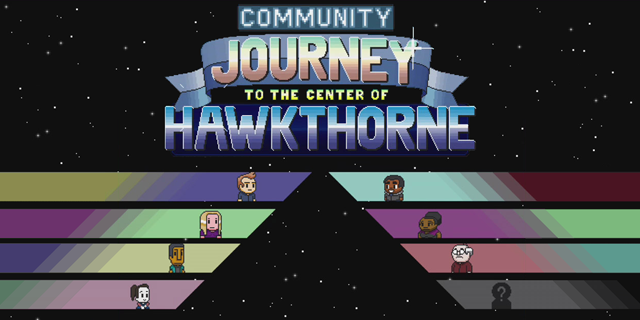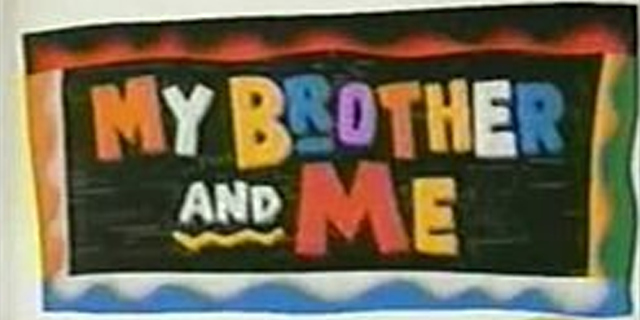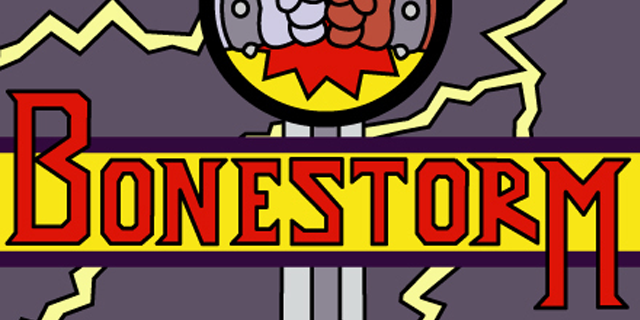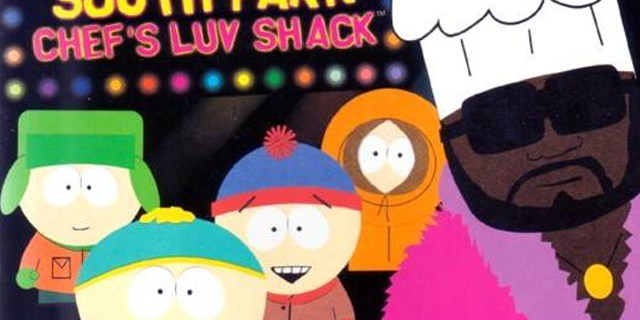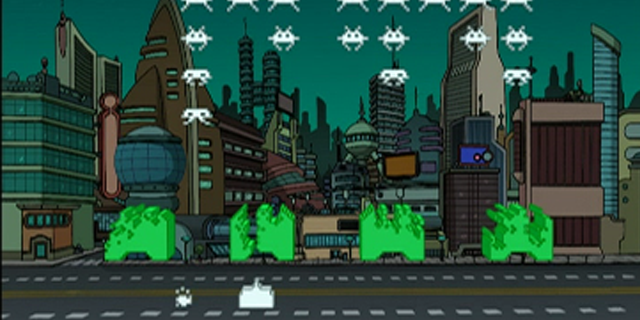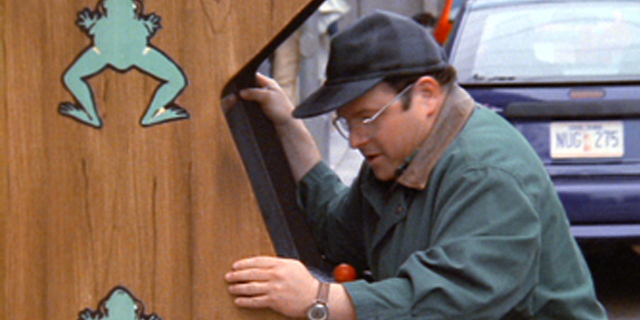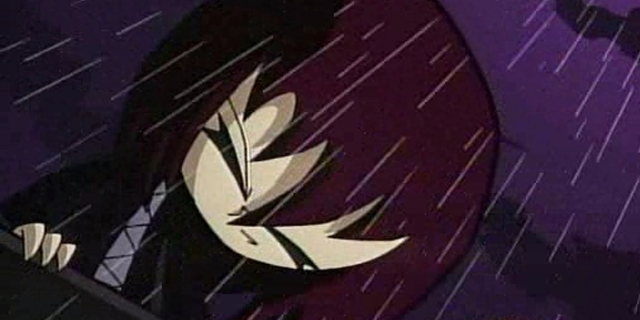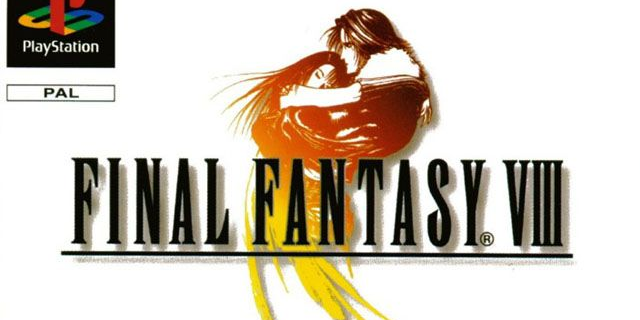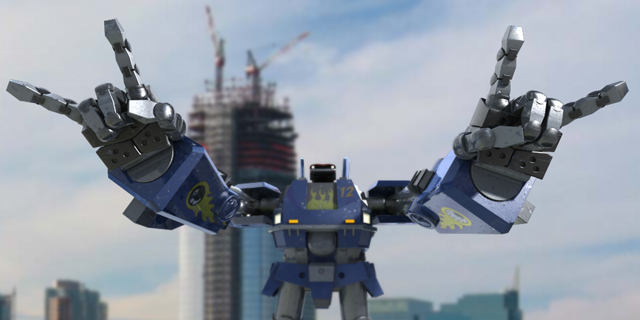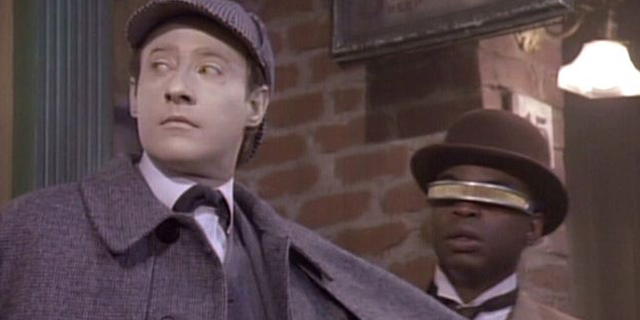As I write this column, my cryogenic tube is being taken out of storage to freeze my body until next fall, as I do every year when Community’s season ends. Last week we got the last three episodes of the third season, including one of the best representations of video games I’ve seen on TV. That is not to say it was a super-accurate example of a video game or the development process of making a game, but it was in-jokey, sincere and, most importantly, fun. And isn’t that what video games are all about?
The entire episode takes place in a 16-bit recreation of the Community world in an RPG setting. Each member of the main cast played a sprite version of themselves and went on an epic 2D adventure. It was all very Scott Pilgrim, and it got me thinking about my favorite video game references and cameos in TV and movies. Since gaming took over the world in the mid-’80s, we’ve seen games mentioned every which way possible in film and TV. Some of them come from a genuine place of love and feel appropriate for the story or characters, while others just come off as uninformed and trying to hard to exhibit “what the kids are into”. Both of these things can result in awesome things. Here are some of my favorites.
My Brother and Me
You probably don’t remember this show, but I do because it was one of the first times I saw a TV character try to play a game and thought “what the hell?” The main character and his two friends were playing a Sega Genesis and doing the normal way-over-excited movements people on TV do when they’re playing video games. But like I said, there were three of them. With three controllers. On a Sega Genesis. And the TV was making Pac-Man noises. What the hell?
The Simpsons – Marge Be Not Proud
When Millhouse gets the hottest game on the market, Bonestorm, Bart is jealous. Unable to afford it on his own, he resorts to crime and tries to steal a copy from the store. Of course he’s caught and is banned from the store. Bart tries his best to hide this indiscretion from Marge, but she finds out and loses all faith in her special little guy for a while. This is a great, touching episode but is also a great early example of how games can get so overhyped. Still today, the whole Internet flips out over every new game that will be the next big thing. If you’ve ever been in a GameStop at a Call of Duty midnight release, you know what I’m talking about.
THRILLHO.
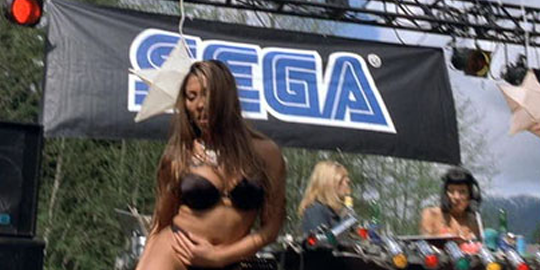
House of the Dead – Sega sponsored rave
In Uwe Boll’s House of the Dead, there is an impromptu rave during the day on a beach. I don’t think this is how raves happen. Even weirder is the fact that the rave seems to be sponsored by Sega. Usually when a company sponsors something it’s to promote a game or product. But there’s no mention of a new game or console at this rave. There’s just a big banner that says “Sega”. I guess around that time Sega WAS kind of marketing mostly to rave-going punks, and that was part of their downfall as a major brand in the industry. Stuff like this is the reason that, when I wear my Sega t-shirt, people say things like “Oh I remember them. Wait, they still make games?”
South Park – Sega Dreamcaaaaast
Here’s another thing making fun of a silly part of Sega’s past. On an episode of South Park, the boys want to save up money to buy a Sega Dreamcast. The other boys don’t quite get why Cartman wants one so bad, but he very excitedly pronounces the name of the console as if he were an overzealous ad voiceover. At this time, this is how most people saw the Dreamcast. Even though it was a great console, to a lot of people it was just a flashy commercial with a silly name. This is why it lasted 18 months on the market. And my faith in the game industry started to crumble.
Futurama – Anthology of Interest II
When the Professor invents a What If machine, Fry of course wants to know what life would be like if it were a video game. The UN sat people like Super Mario, and the military was led by Pac-Man. Invaders from Space (eh? EEEH?) are coming, and only Fry with his skills well honed in ’80s arcades can stop them. This is another episode like last week’s Community that is just chock-full of references.
You can also check out the actual Futurama video game. Writers from the show wrote the cutscenes and they all amount to a full episode.
Seinfeld – George’s Frogger score
Jerry and George’s childhood pizza joint hangout is closing. They spent a lot of time there as kids so they’ll miss it dearly, but most importantly this means their Frogger machine will be unplugged. And George’s high score will be lost. In an effort to preserve his high score, George buys the machine and takes it out of the store. They hook the cab up to a battery pack so he can transport it, but the juice is running low so George must get it across the street quickly in a game of real life Frogger. In a skillful display George shows that his score was well earned and he had not gotten rusty. The cab is safe. Until a semi truck destroys it when George realizes he can’t get it up the curb.
Those Aren’t Muskets – ’80s Video Game Conference
This one isn’t exactly a TV or film reference, but it’s still awesome.
’80s games were ridiculous. Without photorealistic graphics, developers were able to create the craziest absurd concepts for games. What were they thinking? Well it was the ’80s, so of course every popular video game of the era was created in one coke-fueled meeting of game designers.
Invader Zim – Game Slave 2
Inspired by Zim creator Jhonen Vasquez’s own experience waiting for the midnight release of the Sega Dreamcast on 9/9/99, Dib’s sister Gaz wants to go to the mall and wait for the new Game Slave 2 to come out. The line wraps around the entire mall, and there’s only one left when Gaz reaches the counter, but it’s reserved and the guy in line behind her gets it. But he’s not the rightful gamer for whom this was on hold. And Gaz will make him regret it by following him home and tormenting him until the Game Slave 2 is hers.
Charlie’s Angels
Here’s another “what the hell?” moment. In McG’s Charlie’s Angels, one of the characters is stranded in the wilderness completely nude. She comes upon a house and asks two young boys for help. Of course they want to help a completely naked Drew Barrymore, who wouldn’t? I mean when she was still hot, yeah.
The two kids are playing a video game whens he interrupts. Again, this is more over-acting with the controller which makes even less sense since they’re playing Final Fantasy VIII. And they’re both holding controllers.
Megas XLR
Megas XLR is the best example of game references, because the creators and characters just love games. It makes sense that a 20-something unemployed schlub who lives with his mom in Jersey would be into video games, but Coop is a mega-fan. In his basement, we see tons of retro consoles, including an NES, a Genesis and an Atari 2600. The titular giant robot Megas is controlled primarily by a steering wheel in its muscle car head, but sometimes Coop needs more control. He’ll pull out a PS2 controller, a joystick or in one instance, when Megas’s CPU was shut down, Coop had to use his manual override. It was a DDR pad.
Star Trek: TNG – Holodeck
Star Trek: the Next Generation’s holodeck is the ultimate video gaming experience. With the advent of 3D, HD and motion control, game companies are trying with every technological step to get closer to the reality of having a holodeck. I hope it gets here soon, because wearing those stupid 3D glasses and waggling my arms around is not nearly as cool as dressing up as Sherlock Holmes with Data and solving mysteries. Be careful when it breaks though (and it will), because sometimes the CG constructs will get out and kill a lot of people on your ship. That’s a small price to pay for the coolest thing ever.
What’s your favorite use or misuse of video game culture in modern media? Let us know in the comments!



